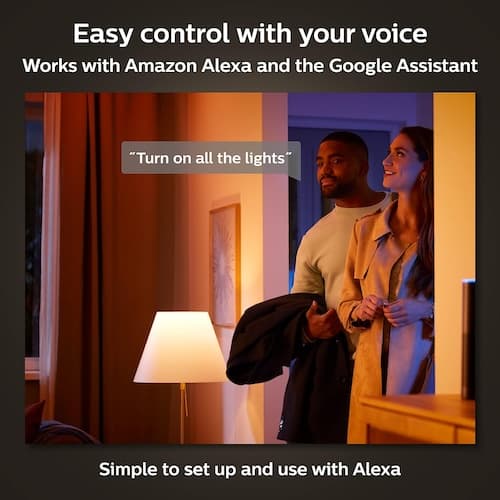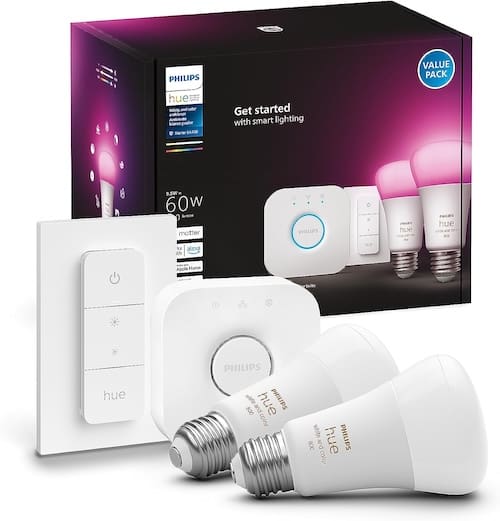Philips Hue is a range of smart lighting products that allows users to control the ambiance and lighting of their home through a smartphone or tablet. These products offer a new way of interacting with light, providing users with a range of customizable features that are designed to enhance their daily lives. In this article, we will delve into the world of Philips Hue, exploring its history, features, and benefits.
History of Philips Hue
Philips Hue was first introduced in October 2012, as a collaboration between the Dutch multinational corporation, Philips, and the startup company, Lighting Science Group. The initial launch featured three products: the Hue A19 bulb, the Hue BR30 bulb, and the Hue bridge. The Hue A19 bulb is designed to fit into standard light fixtures, while the Hue BR30 bulb is intended for use in recessed lighting. The Hue bridge is the central hub that connects the bulbs to the internet, allowing users to control their lighting through a smartphone or tablet.
Since its initial launch, the Philips Hue range has expanded to include a variety of products, including light strips, lamps, and outdoor lighting. The range has also evolved to offer more advanced features, such as voice control and integration with other smart home systems.

Features of Philips Hue
One of the key features of Philips system is its ability to customize the color and brightness of the lighting in a room. With the Philips app, users can choose from a wide range of colors and brightness levels, allowing them to create the perfect ambiance for any occasion. For example, users can choose a warm, dimly-lit setting for a romantic dinner or a bright, energizing setting for a workout.
Another feature of Philips Hue is its ability to schedule lighting. Users can set specific times for their lights to turn on and off, or they can set up more complex schedules that mimic their daily routines. This is particularly useful for those who are away from home, as it can give the impression that someone is still at home, deterring potential burglars.
Philips Hue also offers voice control through its integration with popular smart assistants such as Amazon Alexa, Apple HomeKit, and Google Assistant. This allows users to control their lighting with simple voice commands, making it even more convenient to use.
Benefits of Philips Hue
The benefits of Philips Hue are numerous. Firstly, it offers a convenient and easy-to-use way of controlling lighting in the home. With the Philips Hue app, users can control their lighting from anywhere, at any time, making it easy to customize their lighting to suit their needs.
Secondly, Philips system can help users save money on their energy bills. By using LED bulbs, Philips smart light system is much more energy-efficient than traditional lighting. Users can also set schedules for their lights to turn off when they are not needed, reducing energy waste even further.
Finally, Philips system can improve the overall ambiance of a room. By choosing the right colors and brightness levels, users can create a relaxing, welcoming atmosphere that is perfect for unwinding after a long day.
Buy your starter kit as seen below at Amazon

Conclusion
Overall, Philips Hue is a highly innovative and versatile range of smart lighting products that offers numerous benefits to its users. With its customizable features, scheduling capabilities, and voice control integration, Philips Hue makes it easy for users to control their lighting from anywhere, at any time. Whether you are looking to save money on your energy bills, improve the ambiance of your home, or simply enjoy the convenience of smart lighting, Philips Hue is an excellent choice.
Do you have doubt over smart systems. check out this article about Smart Home
FAQ – Exploring Smart Lighting with Philips Hue
1. What is Philips Hue, and how does this smart lighting system function? Philips Hue stands as a range of intelligent lighting products that empower you to control light color, brightness, and scheduling through your smartphone or voice commands via platforms like Amazon Alexa or Google Assistant.
2. What advantages come with using these smart lights? Philips smart lights bring several benefits, including customizable lighting to suit your mood, energy efficiency, remote control capabilities, and seamless integration with smart home setups for a more connected lifestyle.
3. What types of products are available within the Philips Hue range? Within the Philips lineup, you’ll find a diverse selection of items, including smart bulbs, lightstrips, lamps, fixtures, and complementary accessories – all managed through the Philips app.
4. Is a smart hub necessary for Philips Hue light usage? While the Philips Bluetooth bulbs offer basic functions without a hub, for advanced features such as remote access and integration with other smart devices, using a Philips Hue Bridge (smart hub) is advised.
5. How do I go about setting up these smart lights? To set up Hue, link the Hue Bridge to your Wi-Fi router, install the Philips app on your smartphone, and insert the Philips bulbs. The app will guide you step by step.
6. Can I control these smart lights when away from home? Indeed, with a Philips Hue Bridge connected to your home Wi-Fi, you can manage your lights remotely via the Philips Hue app from anywhere with an internet connection.
7. Do Philips Hue lights play nicely with voice assistants like Amazon Alexa or Google Assistant? Absolutely, Philips lights are compatible with both Amazon Alexa and Google Assistant, enabling you to alter your lighting with voice instructions.
8. Is it possible to establish schedules and routines using Philips Hue lights? Certainly, the Philips app permits you to devise schedules and routines, automating your lighting according to specific times or occurrences – like a gradual morning brightness increase as a natural wake-up aid.
9. Are there any limitations regarding the number of Philips Hue lights I can incorporate? While there’s a practical cap on the number of bulbs per Philips Bridge, each Bridge can accommodate around 50-63 Hue bulbs, contingent on the Bridge generation.
10. Can these smart lights sync with other smart home ecosystems? Yes, Philips lights can seamlessly integrate with various smart home platforms, like Apple HomeKit and Samsung SmartThings, enabling you to harmonize them within a broader smart home setup.
11. Can I utilize third-party apps alongside Philips Hue lights? Absolutely, thanks to Philips Hue’s open API, third-party app developers can create apps with added features, extending beyond the official Philips Hue app.
12. What’s “Hue Entertainment,” and how does it function? “Hue Entertainment” is a feature that syncs your Philips lights with movies, music, and games, enhancing your entertainment involvement by mirroring colors and effects to match your screen or audio.
13. Are these smart lights energy-efficient? Definitely, Philips Hue LED bulbs exemplify energy efficiency, offering potential savings on electricity expenses compared to traditional incandescent bulbs.
14. Do Philips lights accommodate color temperature adjustments? Indeed, many Philips bulbs, especially the White Ambiance and Color Ambiance variants, allow you to fine-tune the color temperature, delivering warm to cool white light adaptable to various activities and times of the day.
























Comments 3